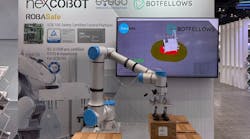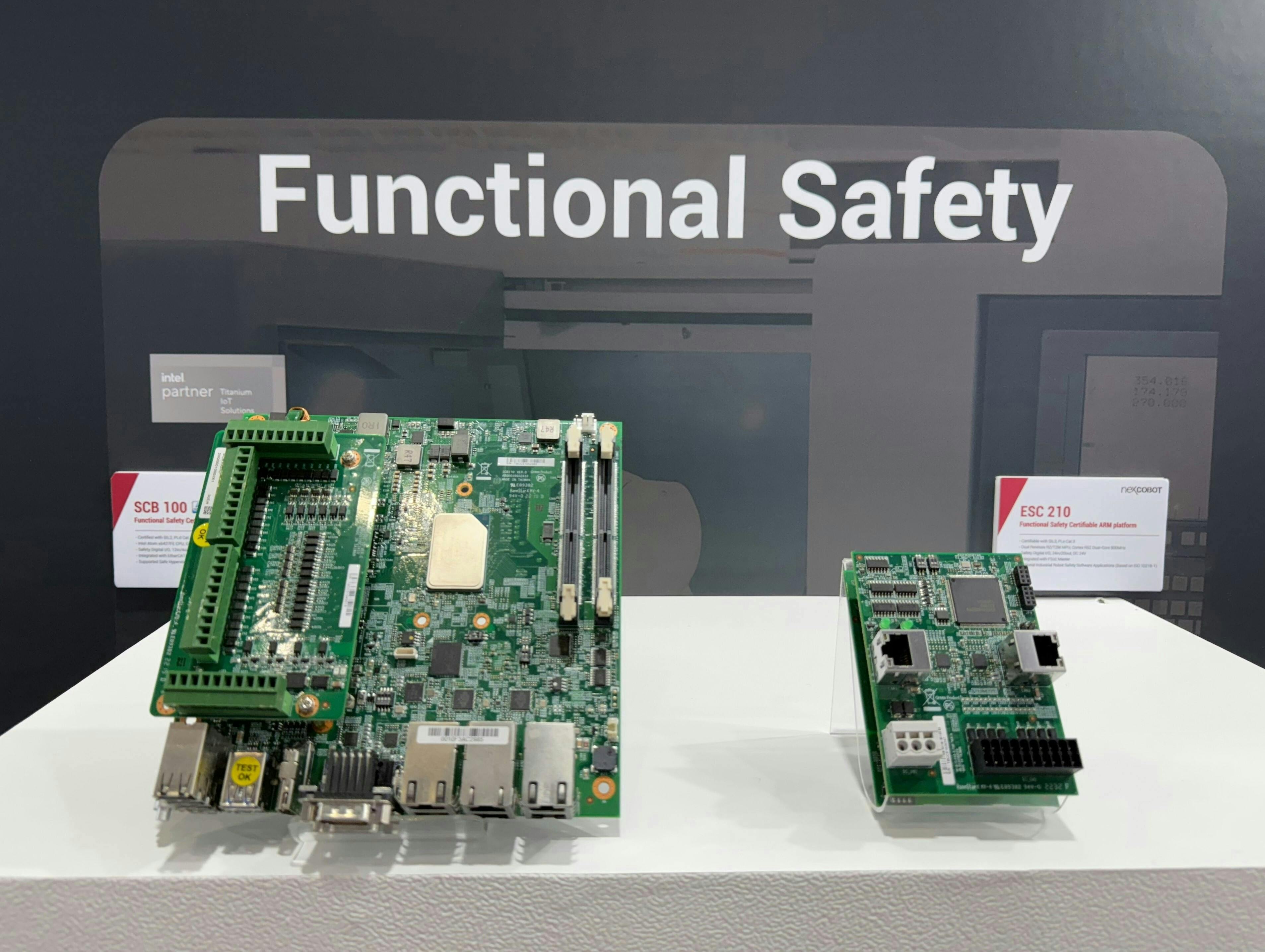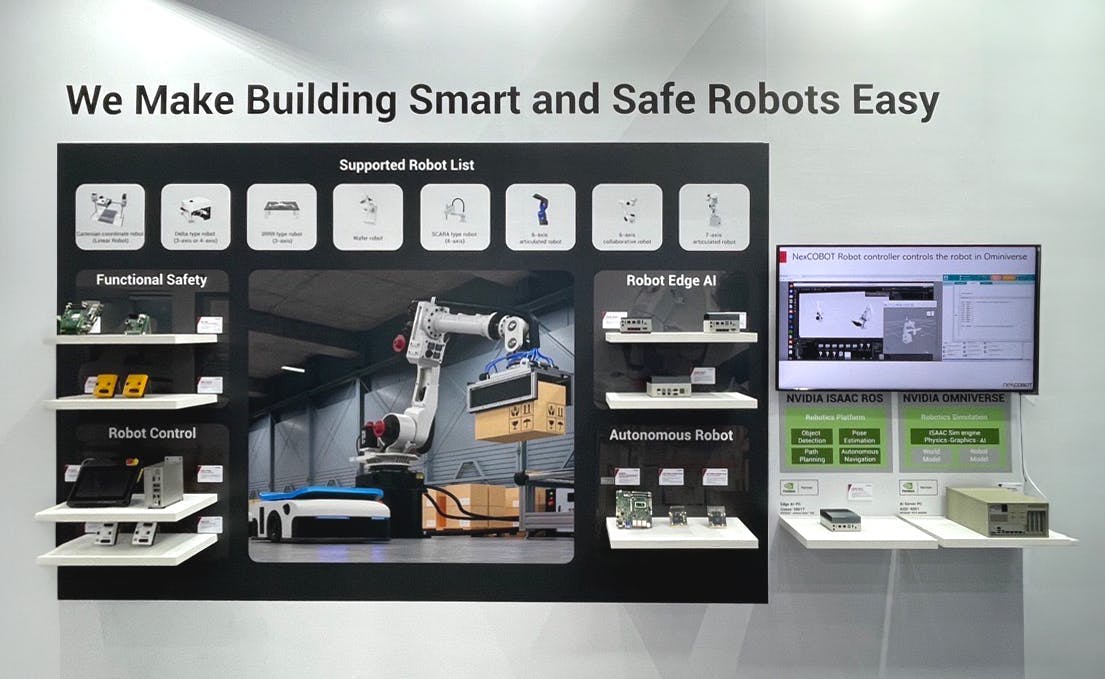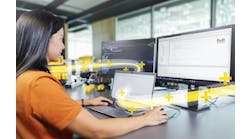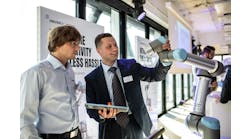How to expand the fieldbus and enable functional safety of a robot
The current ISO 10218 standard is about the safety requirements for industrial robots. Robots are often just a tool within the machine. Also, everyone has a responsibility when it comes to functional safety, not to mention that today’s machine builder should be interested in adaptable automation. Another word for adaptable is dynamic.
NexCobot is developing dynamic functional-safety applications like external force monitoring, speed monitoring and position monitoring that can be found in applications involving hazardous waste, coffee, recycling, autonomous vehicles, glue dispensing, automated screwing and defect inspection. These applications require varying degrees of motion, or robot functional safety.
Jenny Shern, general manager of NexCobot and vice president, IoT automation solutions, at Nexcom International, and her team are passionate about robot functional safety. NexCobot is a subsidiary of Nexcom International. While this discussion is geared toward robots, it involves the controllers and components. In this way, it could be expanded to machine building and autonomous operations or interfaces with robots (Figure 1).
The NexCobot response to robot functional safety is to use two levels of control and create a dynamic functional safety environment. Dynamic functional safety can be achieved with less space, more efficiency and less engineering and planning time. One may ask, how so?
NexCobot utilizes Fail Safe over EtherCAT (FSoE) protocol. FSoE is a dual “black channel” for transferring safety data. Safety data is mathematically confirmed by the controller. This is standardized on IEC 61784-3 and fulfills safety requirements specified by IEC 61508, up to safety integrity level (SIL) 3.
Safety over EtherCAT reduces wiring. But how do you expand the fieldbus to enable functional safety of a robot that works alongside people? If you have a control system that takes care of operations and a control system that is for functional safety, then a robot can be built with two controllers and have a base level for adapting to sensor inputs from the field, as well as a second decision level that deals with making safety decisions based on physical input readings and artificial intelligence (AI) vision systems.
Components must be built with EtherCAT safety functionality and tied to the controller for the safety handshake. For robots, this means the field safety bus is built into the servos that function with the same type of safety functionality as non-robotic servos. Speed, position and force monitoring are used to control robotic response to a safety state.
NexCobot uses Intel’s platform for robotic control, NVidia Jetson AI Platform and robotic smart joints. While collaborating with Renesas Technologies, NexCobot has designed pre-certified robot safety controllers that can partner with the motion components. The advantages of using two controllers, with one being a master controller and one being a safety controller, is that the NexCobot robot architecture does not have an issue looking at 35-50 robot joints and controlling them like a symphony. If they must make a quick stop, it is possible.
NexCobot provides controllers and components. Robot and machine builders can create their own robotic structures. This provides a different type of ecosystem. NexCobot has proven that integration of robots with its system reduces robot build time and integration (Figure 2). NexCobot works closely with TÜV Rheinland to ensure ISO 10218 standards are met with their components. One market NexCobot is highly involved in is the humanoid market. Discussion of humanoids may be off topic for machine builders, but it should be considered for interfacing to machines, if technology evolves to where humanoids are running machines.
The same technology is available to machine builders that want to use SIL 3 type safety ratings in machines.
More information may be found from the EtherCAT Technology Group. Also, Beckhoff has a great explanation of how EtherCAT safety allows application data and safety data to coexist on the backplane.
Future development could require asking if EtherCAT and FSoE will replace common industrial protocol (CIP) applications as far as efficiency? Currently, FSoE benefits from a higher rate of data exchange, integrated safety, simplified cabling and flexibility. CIP safety systems boast similar reasons for adaptation, as far as configuration, scalability, high safety integrity, comprehensive diagnostics and network redundancy.
Why does FSoE win out for robotics and motion safety? Speed. EtherCAT has a more suitable disposition for real-time control and data exchange and that speed is important in the growing human-machine interaction world of robotics. NexCobot and Shern are intent on keeping functional safety with robotics modern and dynamic, allowing customers to have limitless capacity to create electromechanical systems that coincide with humans.
